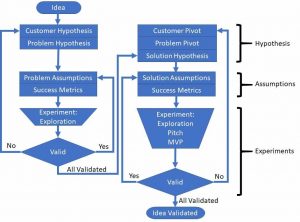AI tools are hyped as a as a shortcut to content creation for marketers. However, irresponsible use can get you in trouble.
Artificial intelligence continues to take the marketing world by storm. The genie is out of the bottle, and it’s not going back in.
For example, Verified Market Research estimates the AI content writing market will grow eightfold over the decade and be worth nearly $ 6.5 billion by 2030.
The use of AI is inevitable and worth investigating. However, you need to prepare to deploy it responsibly to get your desired results and avoid any backfires.
Learn more about the best practices you should follow to create high-level content with the help of AI.
Key Takeaways:
- Create high-quality content by defining your goals, finding the right tools, and learning how to input excellent prompts.
- Review, edit, and personalize AI results to put content in your own voice and ensure it benefits your target audience.
- Avoid copyright and ethical issues by using AI as an assistant, not as your sole writer and editor.
- Keep up with AI developments to stay competitive with your marketing.
1. Identify Your motivation and goals
Like traveling to a destination, you have to know where you want to go if you’re going to reach your goal. You’re unlikely to get useful content out of AI without having a clear purpose in mind.
Start by reminding yourself of your brand goals before crafting content. Then consider the exact call to action that you want to lead up to in the piece you’re working on.
Of course, defining your target audience also guides you. Identify the tone of voice and writing style that will appeal to them and use your AI tools to get you there.
2. Select the right tools and software
OpenAI is the research laboratory behind the best-known large language models. The organization’s nonprofit roots and currently capped for-profit structure opened the door for the innumerable AI tools and software on the market.
However, all AI software is not equal. What the companies build around it determines what each software does and how well it does it.
For example, different apps do better with data analysis, content generation, or content curation.
(Think of it similarly to Android operating systems. The open-source software is on thousands of devices, but the quality varies widely by manufacturer and product.)
Consider your motivation and goals and pick an AI writing tool that meets your needs.
3. Learn how to create great prompts
Prompts are the seeds from which AI programs sprout your content. In this case, the computing adage still holds true: Garbage in, garbage out.
Create great prompts by sticking close to your content theme and objectives. The prompts themselves can help you get started.
For example, you could tell a content writing program: “Provide five bullet points for why content marketing is more important than ever.”
Use the bullets to form an outline. Then, ask for questions that would be interesting and engaging for your target audience.
Keep prompts clear and concise to get focused answers that don’t go off the rails. Trial and error will help you master the skill.
4. Customize the content
AI content creation is only a starting point and a collaborator. You are the voice behind the material. View these programs like a secretary that helps you flesh out your message.
You’ll get fresh ideas by working with AI, but you must always make the material your own. An advantage of doing this within the software is that more advanced tools can learn to mimic your style more closely, saving time on later projects.
5. Review and edit With AI tools and humans
AI models only regurgitate the information they receive from the internet or whatever other training data has been provided. In fact, the programs don’t actually understand what they’re saying.
As a result, you must fact-check everything when it comes to AI-generated content.
AI writing tools also still make egregious grammar and spelling errors. Grammar checkers and human editors are essential to maintaining high quality.
6. Be wary of copyright and plagiarism issues
Various AI tools sell themselves on creating plagiarism-free content. However, the same companies know better than to guarantee such results and remind you to run the articles through a plagiarism checker.
The best way to avoid risking theft is to rewrite the content in your own style (which is always a must with AI).
Also, legal issues are arising regarding whether AI-generated content can belong to the end user of the software. The reason is ChatGPT has trained itself by using copyrighted material.
If you think you can start pumping out AI articles willy-nilly, you’re sure to get caught. AI programs exist that do a serviceable job of discovering AI-generated content. (“Game recognizes game.”)
Just do the right thing and use the AI software as an assistant, not as your dedicated writer and editor.
7. Address any ethical concerns
Of course, depending on how you use AI software, you need to be transparent about your practices. If you’ve built an audience, they come to you expecting quality material that is your own, so disclose a heavy reliance on AI.
Unfortunately, computers can only absorb what humans provide. AI can pull material from questionable sources that reinforce negative stereotypes and prejudiced ideas.
Watch out for inappropriate or inaccurate content as well as biased information.
8. Monitor content quality and SEO results
As with all of your published content, you need to monitor the results of anything you create with the help of AI. Find what works and refine those workflows.
9. Stay current with developments in AI
AI growth has been explosive in recent years. Who knows what tomorrow will bring?
Don’t be like the guy using a BlackBerry in a world of iPhones and Android devices. Subscribe to your favorite marketing and technology sources to find what’s new and how to benefit from developments in AI.
Dig deeper: Our generative AI content is here
Use AI for responsible, high-quality content creation
For better or worse, AI is here to stay and will affect how we generate content. Apply these nine best practices to ensure your content quality stays high and attracts the right audiences.
The post 9 best practices for AI tools in content creation appeared first on MarTech.
MarTech(23)
Report Post



